Updated 1 week ago
Solar panels at the White House
Written by Dan Hahn Dan HahnDan is a solar journalist and content advisor with SolarReviews. He also works with solar installers and solar nonprofits to develop and execute strat...Learn more , Edited by Catherine Lane Catherine LaneCatherine has been researching and reporting on the solar industry for five years and is the Written Content Manager at SolarReviews. She leads a dyna...Learn more
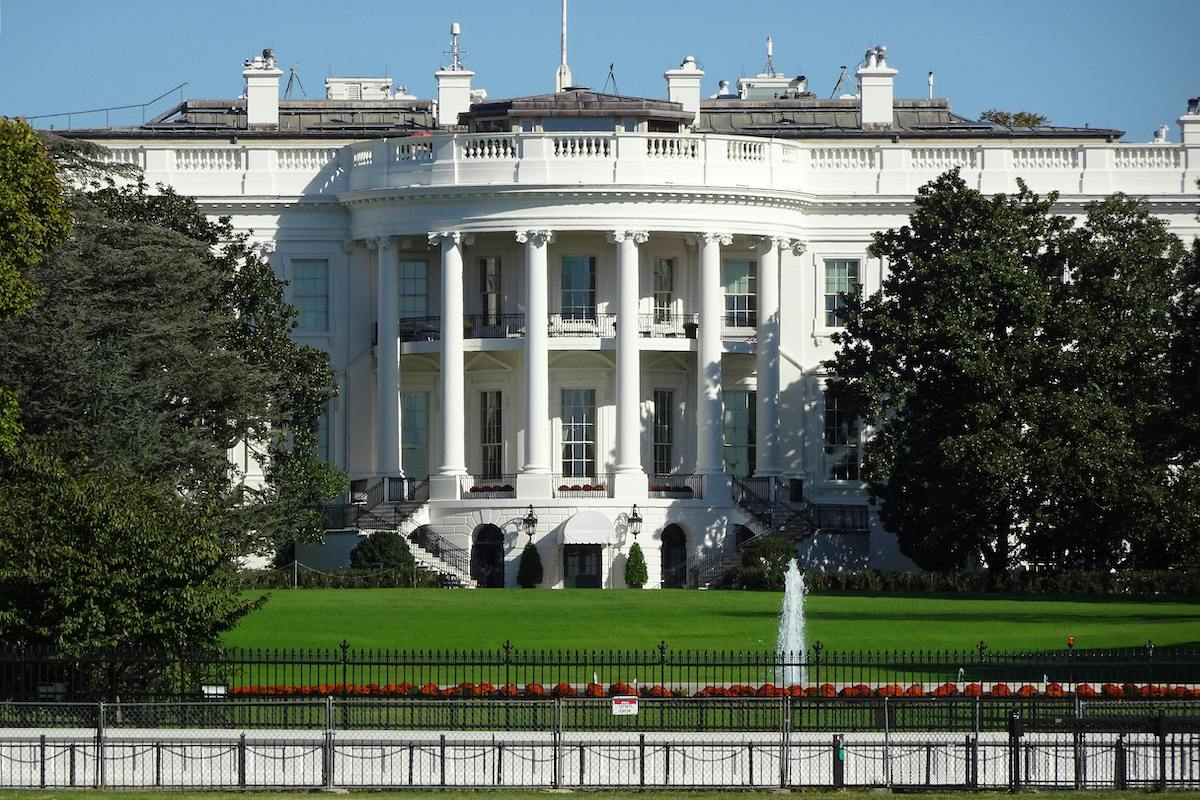

Why you can trust SolarReviews
SolarReviews is the leading American website for solar panel reviews and solar panel installation companies. Our industry experts have a combined three decades of solar experience and maintain editorial independence for their reviews. No company can pay to alter the reviews or review scores shown on our site. Learn more about SolarReviews and how we make money.
Since Jimmy Carter’s decision to install solar panels on the White House in 1979, the property’s use of solar energy has ebbed and flowed with each president residing there. In this article, we’ll explore how each president since Carter has shaped the ways in which both the White House and the nation use photovoltaics.
We’ll cover President Carter’s approach, Reagan’s rationale for removing Carter’s panels, the Bush-Clinton-Bush years, Obama’s solar installation, Trump’s stance on solar energy, and what we can expect to look forward to with the Biden Administration.
Jimmy Carter as a clean energy champion
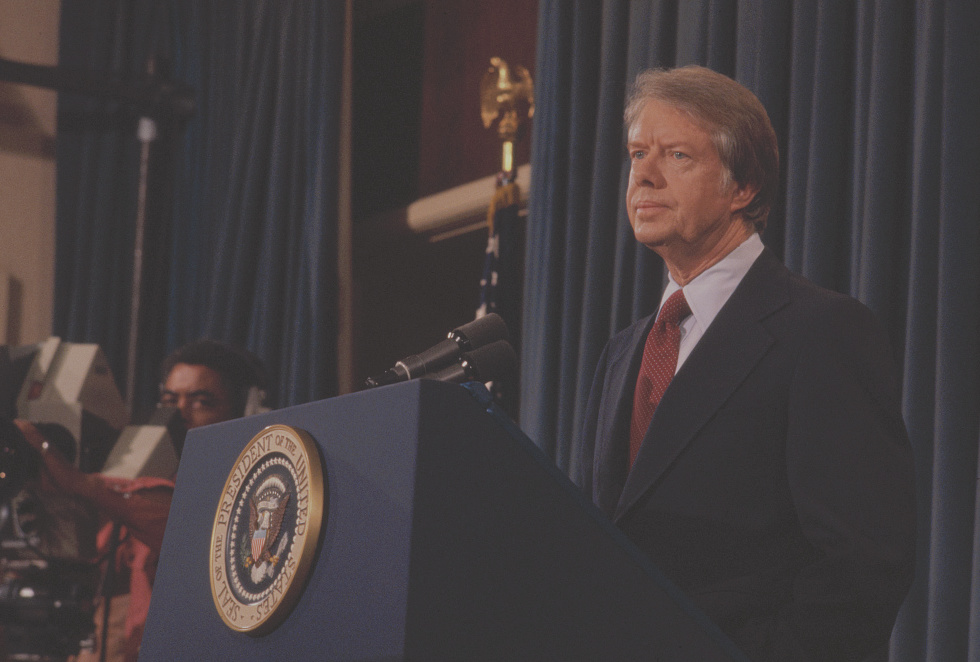
Library of Congress, Prints & Photographs Division, photograph by Bernard Gotfryd, LC-DIG-gtfy-05548.
“A generation from now, this solar heater can either be a curiosity, a museum piece, an example of a road not taken, or it can be a small part of one of the greatest and most exciting adventures ever undertaken by the American people; harnessing the power of the sun to enrich our lives as we move away from our crippling dependence on foreign oil.” - Jimmy Carter.
President Jimmy Carter came to Washington D.C. recognizing a need for the nation to begin investing in a cleaner approach to energy creation, consumption, and conservation. He increased the Department of Energy budget and created tax credits for anyone who invested in using solar power.
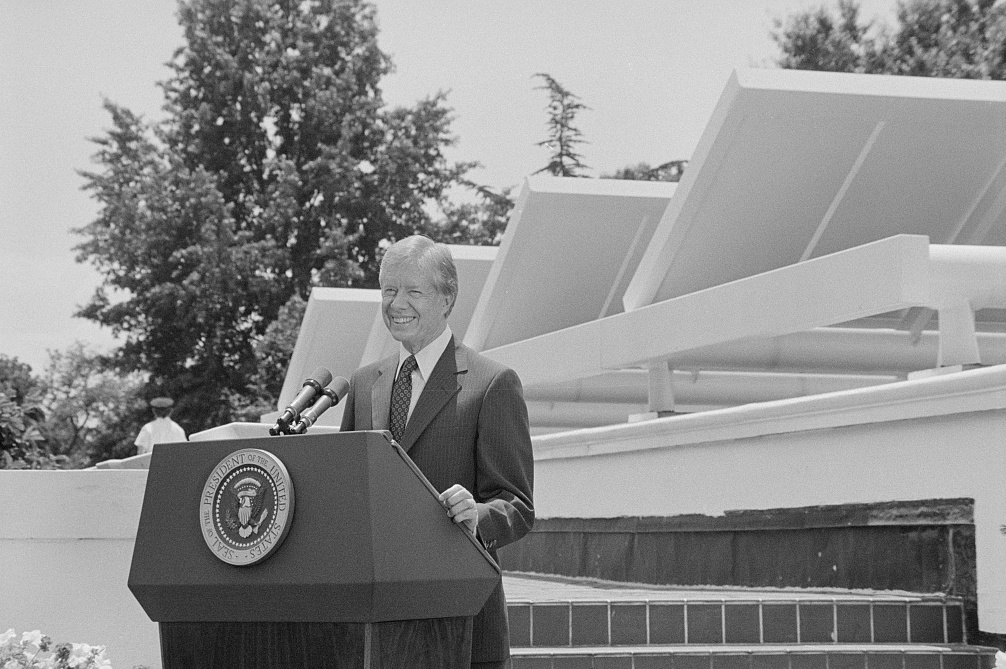
President Jimmy Carter speaking in front of solar panels placed on the West Wing roof of the White House, announcing his solar energy policy.
Library of Congress, Prints & Photographs Division, U.S. News & World Report Magazine Collection, LC-DIG-ppmsca-56594.
“This dependence on foreign sources of oil, is of great concern to us. In the year 2000, the solar water heater being dedicated behind me today will still be here, supplying cheap, efficient energy.” - President Jimmy Carter
In 1979, he commissioned 32 solar water heating panels to be installed on the roof of the White House. Their purpose was to heat water for the cafeteria and laundry room. However, Carter’s solar panels didn’t long outlive his tenure at the White House.
Carter did install nearly 4,000 solar panels on his farm in Plains, Georgia in 2017, though. That array of solar panels provides enough electricity for half of the town’s needs.
Reagan’s decision to remove the panels
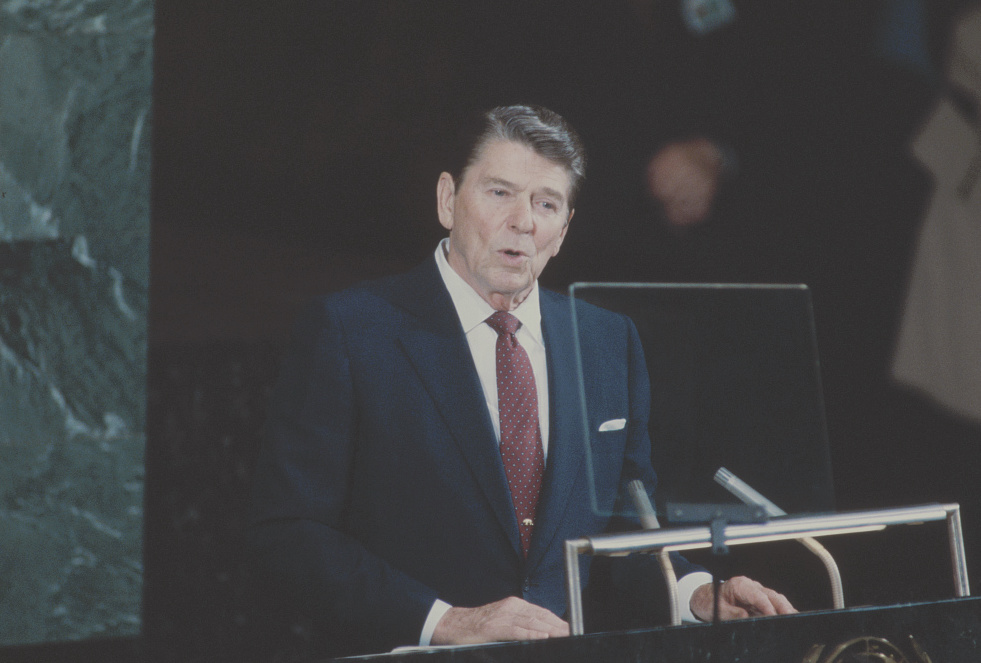
Library of Congress, Prints & Photographs Division, photograph by Bernard Gotfryd, LC-DIG-gtfy-06205.
The solar thermal panels lasted just seven years, as the Reagan Administration decided to dismantle them, along with the tax credits and clean energy research money Carter fought so hard to provide. President Ronald Reagan believed the government was too large, and should have no part in shaping the future of the clean energy industry.
When it came time for the White House roof to be worked on in 1986, the solar panels were taken out. Shortly thereafter, they sat in storage for a while, before being used to help the person pictured below make a show out of bathing himself in public with hot water the panels were still able to create.
Since then, the solar thermal panels have been acquired by museums like the Smithsonian National Museum, National Museum of American History, Jimmy Carter Presidential Library, and China’s Solar Science and Technology Museum in Dezhou. 16 of them were reinstalled on top of the Unity College cafeteria and still help provide hot water at the facility to this day.
Ronald Reagan’s press secretary, when asked why the panels wouldn’t be put back up on the White House remarked, “Putting them back up would be very unwise, based on cost”. Indeed, the cost to the Reagan Administration’s reputation as a small government, oil and gas industry champion would indeed be too great to reinstall them.
Dormant solar energy at the White House until George W. Bush
During the beginning of the George W. Bush Administration in 2003, the National Park Service installed a 9 kilowatt solar electric array on the building maintenance facility, yet it attracted very little media coverage.
They also installed two solar thermal systems, one to heat the pool and spa, and the other to provide general hot water for the property.
George W. Bush did not address the media relative to these solar installations, yet the resonance of their presence did not go unnoticed by Solar Energy Industries Association (SEIA) spokesman Michael Paranzino at the time: “I think the symbolic nature of this exceeds the actual kilowatts produced”.
Though George W. Bush did not do much to advocate for new clean energy policy on his own, the hugely popular solar Investment Tax Credit was passed into law in 2005 under the Bush Administration. That effort was largely spearheaded and enacted by a progressive coalition of clean energy technologies advocates.
Obama’s 2010 decision to install panels on the White House
President Barack Obama’s bold Climate Action Plan in 2013 outlined his commitment to using Executive orders to cut power plant emissions and slash the federal government’s carbon footprint.
He also negotiated the framework for the Paris Climate Agreement and helped enroll almost every country in the world into it. His administration also approved 60 large-scale solar, wind, and geothermal projects which will power about 5 million homes.
The Obama Administration planned to outfit the White House with a fresh solar electric system in 2010, and it was finally installed in 2013 after a competitive bidding process. The panels, inverter, and components are all American-made and the installation is about the size of an average home solar system in the United States.
Trump’s stance on solar energy
President Donald Trump mostly used his stature to promote the fossil fuel industry. He allocated half a billion dollars for clean coal research, mocked climate change, and pulled the United States out of the Paris Climate Agreement.
Instead of spurring growth in the renewable energy industry, he decided to hamper its growth by issuing solar panel tariffs on China. According to SEIA, these tariffs blocked more than 10 gigawatts of solar capacity from being installed. While he contended the tariffs were good for American companies and workers, the outcome proved quite the opposite.
Rolling Stone reports that while 2,000 manufacturing jobs were created, the solar industry lost the consumer demand which could have put 62,000 Americans to work in solar power jobs.
At least he didn’t rip out Obama’s solar panels.
The Joe Biden White House needs more solar panels
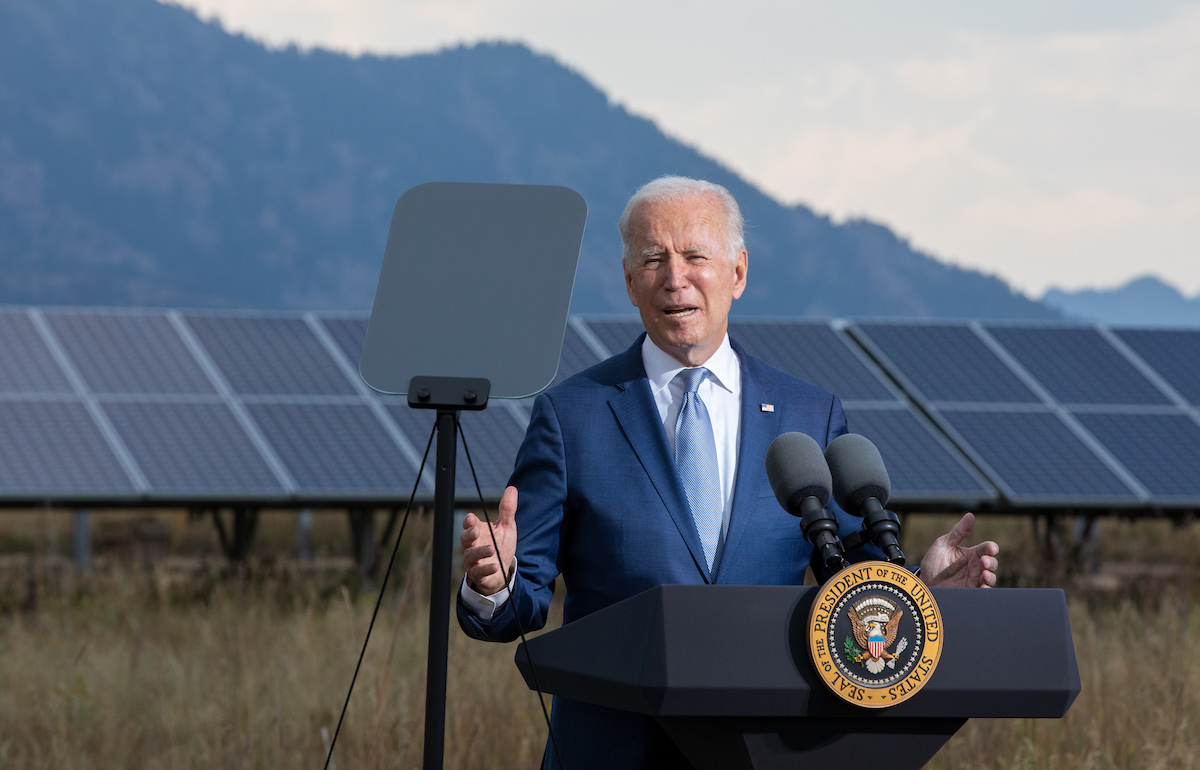
President Joe Biden speaks during a visit to the Flatirons Campus of the National Renewable Energy Laboratory in Arvada, Colorado. Photo by Werner Slocum / NREL.
As a leader, the best thing you can do to inspire people is to be an example for them to look up to. Not just in how you interact with others or how you approach work - but also in your style and how you live your life.
The new leader of the free world, Joe Biden, has a lot of work cut out for him. Our environment is in dire straits, the economy is teetering, and oh yeah - there’s a once-in-a-century pandemic silently tearing through households and businesses all over the world.
Now is the time to get serious about presenting an aspirational vision for us all to admire—especially considering Joe Biden's executive orders on solar. While the White House grounds have recently been outfitted with a solar array, we have a few insights in terms of what to expect out of Joe Biden’s tenure in office and his vision for a clean energy future.
To some, solar panels represent a curiosity. To others, they reflect an enormous opportunity - opportunity to be more resilient, financially savvy, independent from the power company, and an inspiration to anyone who can see them.
Solar panels also allow us to be more of a steward to the planet and offer the generations of children yet to live here a beacon of hope that we are doing all we can to leave our home in better condition than when we inherited it from our ancestors. Here’s to a cleaner energy future for us all.
Dan is a solar journalist and content advisor with SolarReviews. He also works with solar installers and solar nonprofits to develop and execute strategic plans. Dan Hahn founded residential solar energy information and policy resource, Solar Power Rocks, in 2007. As the site's chief architect and senior editor, he developed a national framework for evaluating the impact of residential solar energy policy. Possessed with a mission to communicat...
Learn more about Dan Hahn